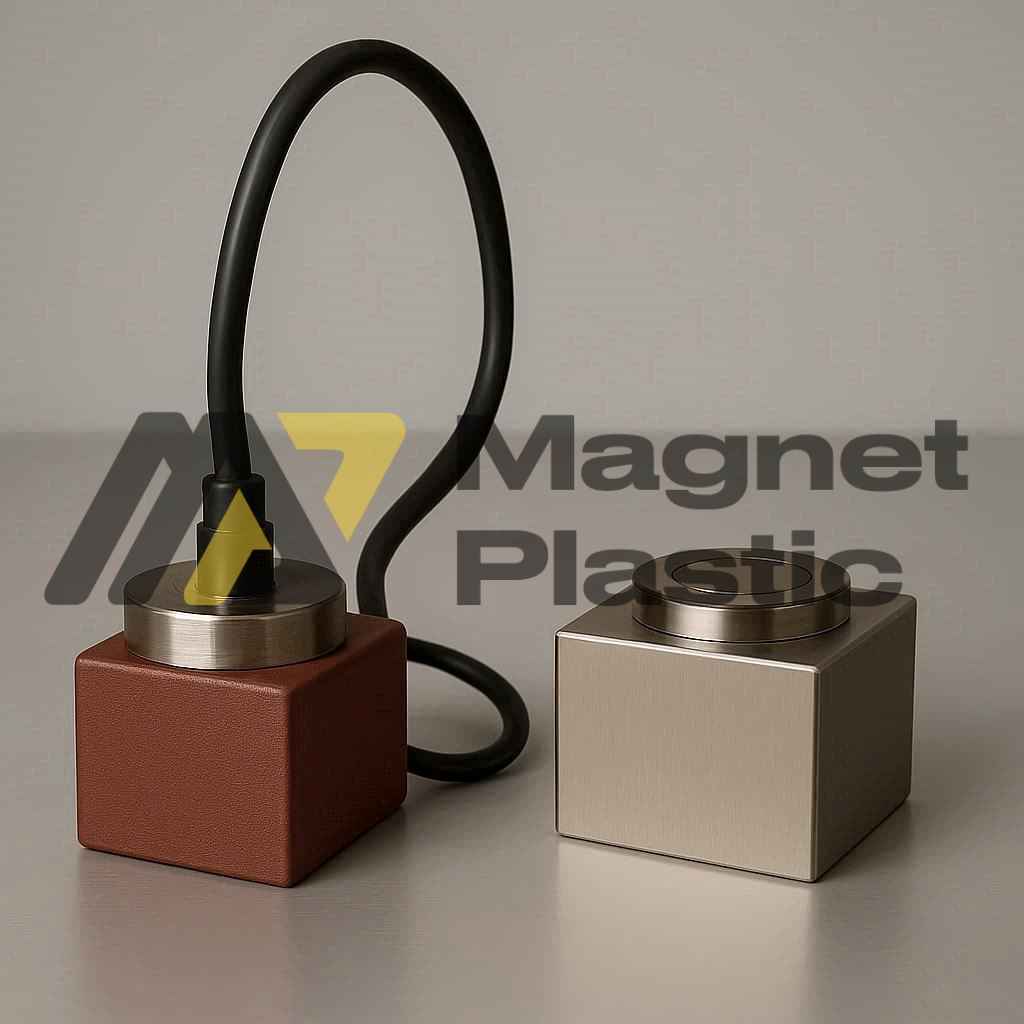Magnetic Bases and Electromagnets: Industrial Holding and Precision Technology
Magnetic bases and electromagnets are essential components in modern engineering, industrial manufacturing, and scientific research. Both harness the power of magnetism to provide holding force, movement, or attraction, but they operate differently: magnetic bases use permanent magnets, while electromagnets rely on electric current to generate controllable magnetic fields.
Magnetic Bases: Strength and Versatility
Magnetic bases are devices that use permanent magnets—commonly made from neodymium, ferrite, samarium, or alnico—encased in protective metal housings. This design prevents damage and demagnetization while concentrating the magnetic flux on the active surface, significantly increasing holding strength.
One key advantage is their ability to securely attach to metal surfaces without drilling or tools, allowing for fast installation and removal. This makes them practical, safe, and reusable for industrial or DIY applications.
Magnetic bases come in different shapes and sizes to meet specific needs. Round or cylindrical bases provide uniform magnetic force distribution, ideal for holding measuring instruments or dial indicators. Rectangular bases are better suited for flat or curved surfaces, ensuring stability even in vibrating or moving conditions.
Applications span multiple industries. In automotive manufacturing, they hold tools, lights, or sensors during assembly. In metalworking, they secure parts during cutting, welding, or machining. On construction sites, they support measuring devices and work lights. In scientific research, they ensure precise positioning of samples and equipment in magnetic experiments.
Electromagnets: Dynamic and Controlled Magnetism
Unlike permanent magnets, electromagnets generate a magnetic field via electric current flowing through a wire coil wrapped around a ferromagnetic core, usually iron. The strength of the magnetic field increases with more coil turns and higher current. This allows the magnetism to be activated or deactivated as needed.
Electromagnets come in various types—linear, bistable, suction, or magnetic locks—designed to move parts, attract metals, or operate locking mechanisms. They are crucial components in motors, generators, industrial machinery, and automation systems.
In the medical field, electromagnets are used in radiology, assisted breathing devices, and fluid dosing equipment, where precision and controllability are critical. Companies like Magnetplastic design and manufacture custom electromagnets, adjusting electrical and mechanical parameters to meet client-specific requirements.
Conclusion
Magnetic bases and electromagnets are innovative solutions grounded in magnetism. While magnetic bases provide stable, energy-free holding, electromagnets allow dynamic, adjustable control through electric current. Together, these technologies form a foundation for modern industrial innovation, enabling processes that are safer, more precise, and highly efficient.
